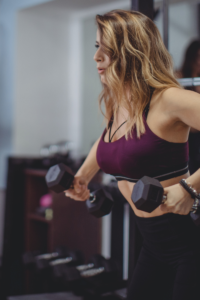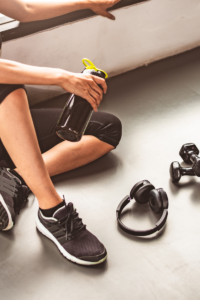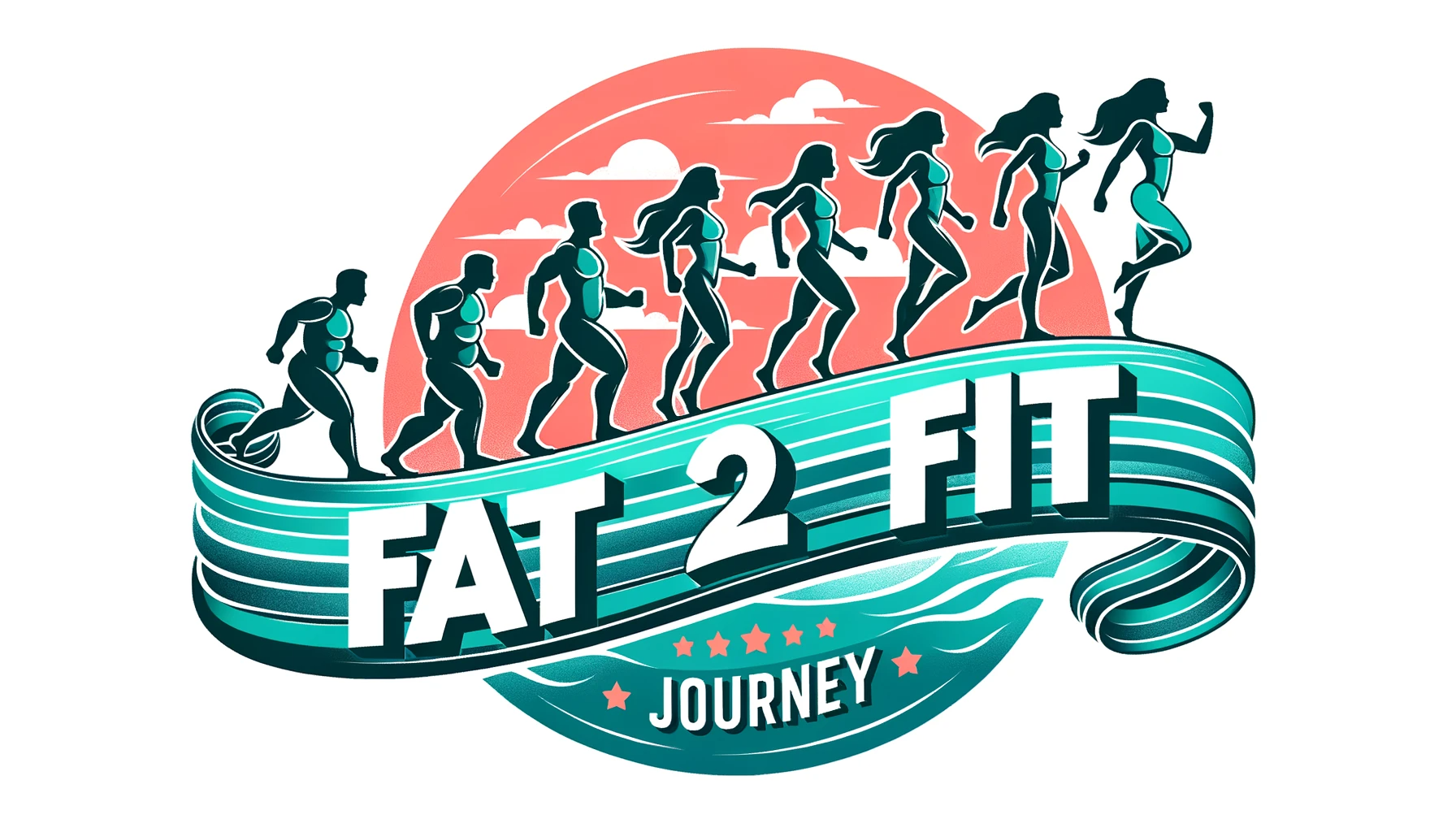Whether you’re a fitness enthusiast or just starting your fitness journey, developing a strong core is the key to achieving overall strength and stability. Core workouts are not just about getting those six-pack abs; they are about building a solid foundation for your body. In this article, we will explore the importance of core strength and how incorporating core workouts into your routine can help you achieve a balanced and powerful physique. So, get ready to strengthen your core and unlock a whole new level of fitness!

Table of Contents
Importance of Core Workouts
Core workouts are an essential part of any fitness routine, as they offer numerous benefits that contribute to your overall strength and stability. By targeting the muscles in your core, which include your abdominals, obliques, and lower back muscles, you can improve your posture, balance, and reduce the risk of injuries. Incorporating core exercises into your workout regimen is vital for both athletic performance and everyday activities.
Enhances overall strength and stability
One of the key benefits of core workouts is their ability to enhance overall strength and stability. Your core muscles act as a stabilizer and provide support for your spine, pelvis, and lower back. Strengthening these muscles allows you to generate more power in your upper and lower body movements, enabling you to perform exercises such as squats, deadlifts, and bench presses with greater efficiency.
Improves posture and balance
Maintaining good posture and balance is crucial for your overall well-being. Weak core muscles can lead to poor posture, which may result in back pain and other musculoskeletal issues. By engaging in regular core workouts, you can correct imbalances and strengthen the muscles responsible for maintaining proper alignment. Improved posture not only enhances your physical appearance but also reduces the strain on your spine and joints.
Reduces the risk of injuries
A strong core can significantly reduce the risk of injuries, especially those related to the lower back. Many common injuries, including muscle strains and sprains, can often be attributed to weak core muscles. By strengthening your core, you provide additional support to your spine and decrease the likelihood of overexertion or excessive strain on other muscles. Whether you’re an athlete who engages in high-impact sports or simply someone who wants to prevent everyday injuries, incorporating core workouts into your routine can help protect your body.
Anatomy and Function of the Core
Before diving into the different types of core muscles and exercises, it’s important to have a basic understanding of the anatomy and function of the core.
Understanding the core muscles
The core is not just limited to your abdominal muscles; it encompasses a group of muscles that work together to provide stability and movement. This group, known as the core muscles, includes the rectus abdominis, obliques, transversus abdominis, multifidus, erector spinae, pelvic floor muscles, and hip muscles.
Role of the core in movement and stability
The core plays a significant role in movement and stability. It acts as a central pillar, transferring forces between the upper and lower body. Whether you’re walking, running, lifting weights, or performing any other physical activity, your core muscles provide a stable foundation and help maintain balance and control. Additionally, a strong core is crucial in protecting your spine and maintaining proper alignment during movement.
Types of Core Muscles
To fully understand core workouts, it’s important to recognize the different muscles that make up the core.
Rectus abdominis
The rectus abdominis is commonly known as the “six-pack” muscle. It runs vertically down the front of the abdomen and is primarily responsible for flexing the spine. Exercises that target the rectus abdominis include crunches, reverse crunches, planks, and cable crunches.
Obliques
The obliques are muscles located on the sides of the abdomen and assist in lateral flexion and rotation of the spine. Strengthening the obliques can help improve core stability and enhance your overall athletic performance. Exercises that target the obliques include Russian twists, side plank with hip dips, bicycle crunches, and woodchoppers.
Transversus abdominis
The transversus abdominis is a deep muscle located underneath the rectus abdominis. It acts as a stabilizer for the spine and assists in maintaining proper posture. Strengthening the transversus abdominis can help tighten the waistline and provide support to the lower back. Exercises that target the transversus abdominis include the vacuum exercise, dead bug, bird dog, and standing exercises with resistance bands.
Multifidus
The multifidus is a group of small muscles that run along the spine, providing stability and support. Strengthening the multifidus can help alleviate back pain, improve posture, and enhance spinal mobility. Exercises that target the multifidus and erector spinae include the superman pose, back extensions, plank with leg lifts, and good mornings.
Erector spinae
The erector spinae muscles, located on either side of the spine, are responsible for extending and maintaining the upright position of the upper body. Strengthening the erector spinae can enhance back strength and reduce the risk of lower back injuries. Exercises that target the erector spinae include the superman pose, back extensions, plank with leg lifts, and good mornings.
Pelvic floor muscles
The pelvic floor muscles support the organs in the pelvic region, assist in bladder and bowel control, and play an important role in core stability. Strengthening these muscles can help prevent issues such as urinary incontinence and improve overall core strength. Exercises that target the pelvic floor muscles include Kegels, bridge exercises, and pelvic tilts.
Hip muscles
The hip muscles, including the glutes, play a crucial role in core stability and lower body function. Strengthening the hip muscles can help improve overall strength and prevent injuries. Exercises that target the hip muscles include glute bridges, hip thrusts, clamshells, and leg raises.
Core Workout Principles
To get the most out of your core workouts, it’s important to follow some fundamental principles.
Engaging all core muscles
A comprehensive core workout should target all the different core muscles. By incorporating exercises that engage each muscle group, you can ensure balanced development and overall core strength. It’s important to remember that the core muscles work together synergistically, so neglecting a specific muscle group can lead to imbalances and reduce the effectiveness of your core workouts.
Progressive overload
Like any other muscle group, the core muscles need to be progressively overloaded to continue developing and becoming stronger. This means gradually increasing the intensity, duration, or complexity of your core workouts over time. Gradually incorporating more challenging exercises or increasing the number of repetitions and sets can help prevent plateaus and ensure continuous progress.
Proper form and technique
Maintaining proper form and technique is crucial to ensure safety and maximize the effectiveness of your core workouts. Performing exercises with improper form not only increases the risk of injuries but also reduces the activation of target muscles. It’s important to focus on proper alignment, engage the appropriate muscles, and avoid excessive strain on the neck or lower back. If you’re unsure about proper form, seek guidance from a qualified fitness professional.
Balanced training
While core workouts are essential, it’s important to maintain a balanced training program that includes exercises for other muscle groups as well. Neglecting other areas of the body can lead to muscle imbalances and suboptimal overall strength. Incorporate exercises for the upper body, lower body, and cardiovascular training to achieve a well-rounded fitness routine.
Rest and recovery
Just like any other muscle group, the core muscles need time to recover and repair after intense workouts. Adequate rest and recovery periods are important for muscle growth and preventing overuse injuries. Make sure to include rest days in your training schedule and prioritize sleep and nutrition to support the recovery process.

Exercises for the Rectus Abdominis
The rectus abdominis is a prominent muscle that many individuals strive to develop for the coveted “six-pack” appearance. Here are some effective exercises that target the rectus abdominis:
Crunches
Crunches are a classic exercise that target the rectus abdominis. Lie on your back with your knees bent and feet flat on the ground. Place your hands behind your head or crossed over your chest. With your core engaged, lift your head, neck, and shoulders off the ground while keeping your lower back pressed into the floor. Slowly lower back down and repeat for the desired number of repetitions.
Reverse crunches
Reverse crunches specifically target the lower portion of the rectus abdominis. Lie on your back with your arms by your sides and your legs bent at a 90-degree angle. Engage your core and lift your hips off the ground, bringing your knees towards your chest. Slowly lower your hips back down and repeat the movement.
Planks
Planks are a popular exercise that not only target the rectus abdominis but also engage the entire core. Start by positioning yourself face down on the floor, resting on your forearms and toes. Ensure that your elbows are directly underneath your shoulders and your body forms a straight line from head to toe. Hold this position for 20 to 60 seconds, focusing on maintaining proper form and engaging your core muscles.
Cable crunches
Cable crunches are a great way to add resistance and increase the intensity of your rectus abdominis workout. Attach a rope handle to a cable machine at a height above your head. Kneel facing away from the machine and grasp the handles with your hands positioned near your temples. Slowly crunch forward, bringing your elbows towards your thighs. Pause briefly at the bottom of the movement and then return to the starting position. Repeat for the desired number of repetitions.
Exercises for the Obliques
To target the oblique muscles, which are responsible for the rotational and lateral flexion of the spine, incorporate the following exercises into your core workout routine:
Russian twists
Russian twists are an effective exercise for targeting the obliques. Sit on the floor with your knees bent and your feet flat on the ground. Lean back slightly, keeping your spine straight and core engaged. Hold a weight or medicine ball in front of your chest and twist your torso from side to side, tapping the weight or ball on the ground on each side. Maintain proper form and engage your obliques throughout the movement.
Side plank with hip dips
Side planks with hip dips are a challenging exercise that engages the obliques as well as the stabilizing muscles of the core. Start by lying on your side with your elbow directly beneath your shoulder and your legs extended. Lift your hips off the ground, creating a straight line from your head to your heels. From this position, lower your hips down towards the ground and then lift them back up. Repeat the movement for the desired number of repetitions before switching to the other side.
Bicycle crunches
Bicycle crunches are a dynamic exercise that targets both the rectus abdominis and oblique muscles. Start by lying on your back with your knees bent and your hands behind your head. Lift your shoulders off the ground and bring one knee towards your chest while extending the opposite leg, simultaneously rotating your upper body to bring your elbow towards the knee. Alternate sides in a cycling motion, focusing on engaging your obliques throughout the movement.
Woodchoppers
Woodchoppers are a functional exercise that mimics the twisting motion used in activities like swinging a golf club or chopping wood. Stand with your feet shoulder-width apart, holding a weight or medicine ball with both hands. Start with the weight at one side of your body and with your arms straight, twist your torso diagonally across your body, raising the weight above your opposite shoulder. Control the movement as you return to the starting position and repeat on the other side.

Exercises for the Transversus Abdominis
Target the transversus abdominis and achieve a tight waistline by incorporating the following exercises into your core routine:
Vacuum exercise
The vacuum exercise is a subtle yet effective way to engage and strengthen the deep transversus abdominis muscle. Start by standing or sitting upright and consciously draw your navel towards your spine, focusing on contracting the transversus abdominis. Hold this contraction for 10 to 20 seconds while maintaining normal breathing. Release and repeat the exercise for multiple repetitions.
Dead bug
The dead bug exercise targets the transversus abdominis while also engaging the hip flexors. Start by lying on your back with your arms extended towards the ceiling and your legs bent at a 90-degree angle, knees stacked over hips. Maintaining a neutral spine and engaging your core, slowly lower one arm above your head while simultaneously extending the opposite leg, maintaining contact with the ground. Return to the starting position and repeat on the other side.
Bird dog
The bird dog exercise is a great way to strengthen the transversus abdominis and improve core stability. Begin on all fours with your hands directly under your shoulders and your knees directly under your hips. Extend one arm forward while simultaneously extending the opposite leg back, maintaining a stable core and neutral spine. Hold the position for a few seconds before returning to the starting position and switching sides.
Standing exercises with resistance bands
Resistance bands can be a valuable tool in targeting the transversus abdominis. Stand with your feet shoulder-width apart and anchor a resistance band around a sturdy object. Hold the other end of the band with both hands at chest level. Slowly rotate your torso away from the anchor point, keeping your feet planted and your core engaged. Return to the starting position and repeat the movement for the desired number of repetitions.
Exercises for the Multifidus and Erector Spinae
Strengthening the multifidus and erector spinae muscles is essential for maintaining a strong and stable core. Add the following exercises to your routine to target these muscles:
Superman
The superman exercise primarily targets the erector spinae muscles. Start by lying face down on the floor with your arms extended in front of you. Slowly lift your arms, chest, and legs off the ground, simultaneously engaging your lower back muscles. Hold this position for a few seconds before lowering back down to the starting position. Repeat the movement for several repetitions.
Back extensions
Back extensions specifically target the erector spinae while also engaging the glutes and hamstrings. Start by lying face down on a stability ball or bench, with your feet against a wall for stability. Cross your arms over your chest or place your hands behind your head. Engage your lower back muscles and lift your upper body off the ball or bench, keeping your neck in a neutral position. Pause briefly at the top of the movement before slowly lowering back down and repeating.
Plank with leg lifts
The plank with leg lifts is a challenging exercise that targets both the multifidus and erector spinae muscles. Begin in a forearm plank position, with your elbows directly under your shoulders and your body forming a straight line from head to heels. Engage your core and lift one leg off the ground while maintaining proper form and alignment. Lower the leg back down and repeat the movement with the opposite leg.
Good mornings
Good mornings primarily target the erector spinae muscles while also engaging the hamstrings and glutes. Stand with your feet shoulder-width apart and place a barbell across your upper back, resting it on your shoulders. With a slight bend in your knees and your core engaged, hinge forward at the hips, lowering your torso towards the ground while maintaining a neutral spine. Keep your back straight and your weight in your heels. Return to the starting position by squeezing your glutes and engaging your lower back muscles.
Exercises for the Pelvic Floor Muscles
Strengthening the pelvic floor muscles is important for both men and women. Incorporate the following exercises into your core routine to target these muscles:
Kegels
Kegel exercises are a widely recognized method for strengthening the pelvic floor muscles. Begin by sitting or lying down comfortably. Contract the muscles you would use to stop the flow of urine or prevent passing gas. Hold this contraction for a few seconds and then relax. Repeat the exercise for multiple sets, aiming for a total of 10 to 15 repetitions.
Bridge exercise
The bridge exercise targets not only the glutes but also the pelvic floor muscles. Start by lying on your back with your knees bent and feet flat on the ground. Place your arms by your sides, palms facing down. Engage your glutes and core, and lift your hips off the ground until you achieve a straight line from your knees to your shoulders. Hold this position for a few seconds before lowering your hips back down. Repeat the movement for multiple repetitions.
Pelvic tilts
Pelvic tilts are a simple yet effective exercise for engaging the pelvic floor muscles. Begin by lying on your back with your knees bent and feet flat on the ground. Place your hands on your hips. Tilt your pelvis forward, pressing your lower back into the ground. Slowly reverse the movement, tilting your pelvis backward, and lifting your lower back off the ground slightly. Alternate between forward and backward tilts, focusing on engaging your pelvic floor muscles throughout the movement.
Exercises for the Hip Muscles
To strengthen the hip muscles and improve overall core stability, incorporate the following exercises into your routine:
Glute bridges
Glute bridges primarily target the gluteus maximus but also engage the hamstrings and core muscles. Start by lying on your back with your knees bent and feet hip-width apart. Place your arms by your sides, palms facing down. Engage your glutes and core, and lift your hips off the ground until you achieve a straight line from your knees to your shoulders. Hold this position for a few seconds before lowering your hips back down. Repeat the movement for multiple repetitions.
Hip thrusts
Hip thrusts are a more advanced version of glute bridges that provide a greater challenge to the hip muscles. Begin by sitting on the ground with your back against a bench, knees bent, and feet flat on the ground. Place a barbell across your hips or use a resistance band around your hips for added resistance. Engage your glutes and core, and lift your hips up towards the ceiling until you achieve a straight line from your knees to your shoulders. Hold this position for a few seconds before lowering your hips back down and repeating the movement.
Clamshells
Clamshells target the muscles of the outer hip, particularly the gluteus medius. Start by lying on your side with your knees bent and your feet together. Ensure that your hips and shoulders are stacked. With your core engaged, lift your top knee while keeping your feet together. Avoid rolling your hips backward during the movement. Slowly lower your knee back down and repeat the exercise for the desired number of repetitions before switching to the other side.
Leg raises
Leg raises target the hip flexors while also engaging the lower abdominal muscles. Start by lying on your back with your legs straight and your arms by your sides. Engage your core and lift your legs off the ground, keeping them together and maintaining a slight bend in your knees. Slowly lower your legs back down towards the ground, being mindful not to let them touch. Repeat the movement for the desired number of repetitions, focusing on keeping your core engaged throughout.
In conclusion, incorporating core workouts into your fitness routine is essential for overall strength, stability, posture, balance, and injury prevention. By targeting the different muscles that make up the core, such as the rectus abdominis, obliques, transversus abdominis, multifidus, erector spinae, pelvic floor muscles, and hip muscles, you can achieve a solid foundation for optimal physical performance. Remember to follow core workout principles such as engaging all core muscles, progressively overloading the exercises, maintaining proper form and technique, balancing training, and allowing for adequate rest and recovery. With a variety of exercises available for each core muscle group, you can create a comprehensive core workout that suits your fitness level and goals. So, strengthen your core and build a strong foundation for a healthier, more active life.
